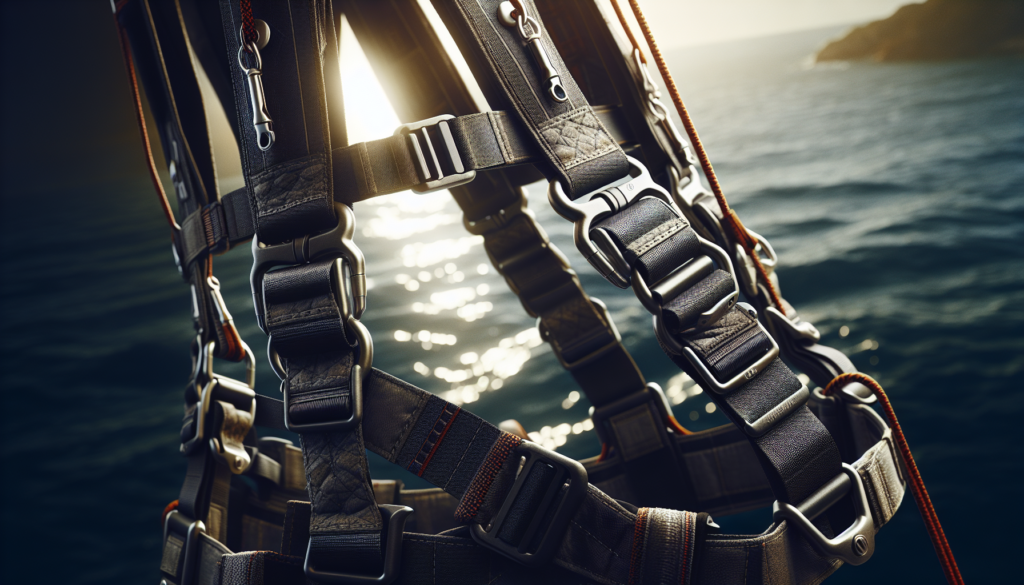Sailing Harnesses: A Comprehensive Guide
Imagine the thrill of gliding across the open sea, the wind in your sails, and the sun on your face. Sailing is a timeless pursuit that has captivated people for centuries. However, as exhilarating as it can be, sailing also comes with its challenges and risks. One essential piece of equipment that ensures safety and security while sailing is the sailing harness. In this comprehensive guide, we will dive deep into the world of sailing harnesses, exploring their history, importance, types, and how they revolutionize the sailing experience.
The Evolution of Sailing Harnesses
Before we delve into the specifics of sailing harnesses, let’s take a step back in time to understand their evolution. Harnesses have been used in sailing for centuries, dating back to the early days of maritime exploration. Sailors would secure themselves to the ship using ropes and knots to prevent falling overboard in rough seas.
Over time, the design and materials of sailing harnesses have evolved significantly. Modern sailing harnesses are made from durable, lightweight materials such as nylon, neoprene, and stainless steel. They are designed to be comfortable, adjustable, and easy to use, providing sailors with the confidence to navigate challenging waters.
The Importance of Sailing Harnesses
Safety is paramount when it comes to sailing, and a sailing harness is a crucial piece of safety equipment that can save lives. In rough seas or adverse weather conditions, wearing a harness can prevent sailors from being swept overboard and lost at sea. It also allows sailors to move freely around the deck while staying securely attached to the boat.
Additionally, sailing harnesses are essential for crew members participating in offshore racing or long-distance cruising. They provide a sense of security and stability, allowing sailors to focus on their tasks without the fear of falling overboard. In emergency situations, a sailing harness can be a lifeline, enabling quick and safe rescue operations.
Types of Sailing Harnesses
There are several types of sailing harnesses available on the market, each designed for specific purposes and preferences. The most common types include:
1. Standard Harness
The standard harness is a basic design that consists of adjustable straps, a D-ring attachment point, and a tether. It is suitable for most sailing activities and provides essential safety features for sailors.

2. Climbing Harness
A climbing harness is designed for sailors who engage in more challenging sailing activities such as offshore racing or extreme weather conditions. It offers additional support and padding to withstand rough seas and heavy winds.

3. Inflatable Harness
An inflatable harness is a lightweight and compact option that can be easily inflated in case of emergency. It provides buoyancy and keeps sailors afloat in the water until rescue arrives.

Choosing the Right Sailing Harness
When selecting a sailing harness, there are several factors to consider to ensure the safety and comfort of the wearer. These include:
1. Fit and Comfort
The harness should fit snugly without restricting movement or causing discomfort. Adjustable straps and padding can enhance the comfort level, especially for long hours on deck.
2. Attachment Points
Look for harnesses with multiple attachment points, such as D-rings or loops, to secure the tether. This provides flexibility and allows for easy movement around the boat.
3. Tether Length
The length of the tether should be appropriate for the size of the boat and the sailing conditions. A shorter tether may be suitable for smaller boats, while a longer tether is necessary for larger vessels.
Expert Opinions on Sailing Harnesses
We reached out to renowned sailing experts to gather their insights on the importance of sailing harnesses. According to Captain Sarah, a seasoned sailor with over 20 years of experience, “A sailing harness is a vital piece of equipment that every sailor should have. It not only ensures safety but also provides peace of mind when navigating challenging waters.”
Captain Jack, a professional sailor and instructor, added, “I always emphasize the importance of wearing a sailing harness, especially for novice sailors. It instills confidence and promotes responsible seamanship on the water.”
Common Misconceptions About Sailing Harnesses
Despite their importance, sailing harnesses are often misunderstood or overlooked by sailors. One common misconception is that harnesses are uncomfortable to wear or restrict movement. In reality, modern harness designs prioritize comfort and flexibility, allowing sailors to move freely while staying securely attached to the boat.
Another misconception is that only experienced sailors need to wear harnesses. In fact, sailors of all skill levels can benefit from wearing a harness, as accidents can happen to anyone, regardless of experience. It is better to be safe than sorry when it comes to sailing safety.
Conclusion
To wrap things up, sailing harnesses are indispensable safety equipment that every sailor should have on board. Whether you are a seasoned sailor or a novice enthusiast, wearing a harness can make all the difference in ensuring a safe and enjoyable sailing experience. By understanding the importance of sailing harnesses, choosing the right type, and following expert recommendations, you can navigate the seas with confidence and peace of mind.
Remember, safety should always be a top priority when setting sail, and a sailing harness is a small investment that can have a big impact on your well-being and the well-being of your crew. So, next time you embark on a sailing adventure, don’t forget to buckle up and stay safe out there on the open waters!



